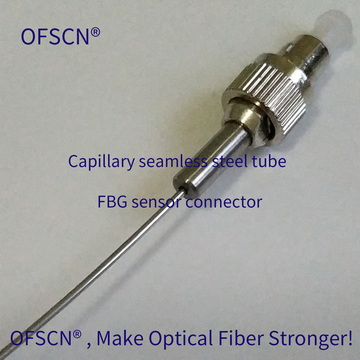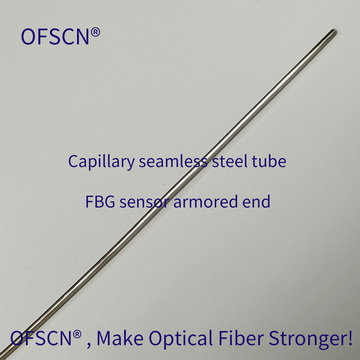This article analyzes the advantages of Fiber Bragg Grating (FBG) sensors and discusses the environments where FBG sensors are particularly advantageous. It also highlights the characteristics and advantages of OFSCN® capillary seamless steel tube fiber bragg grating sensors. For a more detailed discussion of these advantages, please refer to other articles on the official website of DCYS.
FBG sensors possess several advantages that traditional electrical sensors cannot compare with, including:
1. FBG Sensor can be operated safely in potentially explosive environments:
The measurement principle of FBG sensors is non-electrical, which means they do not produce sparks and are not affected by external electromagnetic signals.
When using OFSCN® capillary seamless steel tube fiber bragg grating sensors, the physical measurement principle eliminates the risk of fire or explosion caused by electrical operation. Additionally, the stainless steel seamless tube provides excellent mechanical protection, allowing the sensors to continue working even in the event of an explosion.
 |
|
Figure 1 |
2. Multi-point and multi-parameter measurement on a single FBG sensor:
Can use OFSCN® capillary seamless steel tube fiber bragg grating sensors (see Figure 1), they are sensors encapsulated multiple FBGs with different wavelength in a single sensor, enabling quasi-distributed measurement of multiple points or parameters in the tested object or environment. Alternatively, a hybrid network of multiple FBG sensors with different wavelengths can be achieved through serial and parallel connections using a communication network (see Figure 2).
 |
|
Figure 2 |
3. FBG sensors- small size and lightweight, suitable for hard-to-reach locations and measurement points:
Utilizing the new design of OFSCN® capillary seamless steel tube fiber bragg grating sensors, with a diameter of only 0.9 or 0.6 millimeters and a weight of approximately 3 grams per meter, minimal intrusion into the tested object or environment is achieved.
 |
 |
|
Figure 3 |
Figure 4 |
4. Remote sensing and networking capability of FBG measurement:
The distance between FBG sensors and the FBG demodulator can reach several kilometers. This allows for the networking of various types of FBG sensors within a data center, enabling multipoint temperature measurement within a single FBG sensor or the serial connection of multiple FBG sensors for multipoint temperature, stress, and strain measurement. This facilitates comprehensive monitoring of a large area of the tested object and environment.
 |
|
Figure 5 |
5. Cost-effective FBG measurement (temperature, stress, strain, etc.):
Considering the cost aspect, when using more than 12 or more sensors, the use of OFSCN® capillary seamless steel tube fiber bragg grating sensors (with built-in FBG arrays or series-connected multiple FBG sensors) in combination with the FBG demodulator solution provided by DCYS can offer a more price-advantageous solution for FBG sensors.
6. FBG sensors exhibit high mechanical reliability and fatigue resistance:
The new OFSCN® capillary seamless steel tube fiber bragg grating sensors are designed with patented technology, utilizing stainless steel seamless tubes for the encapsulation and protection of FBGs. This design ensures the sensors have excellent mechanical reliability and fatigue resistance.
 |
|
Figure 6 |
7. FBG sensors provide absolute measurement values without the need for reference values:
FBG are based on the absolute parameter of "Bragg wavelength" for measurement. They are minimally affected by power and attenuation within the optical fiber channel. Therefore, fluctuations in fiber attenuation do not impact the wavelength measurement, making FBG sensors superior to distributed optical fiber sensing systems in this regard.
Our philosophy is: "OFSCN®, make optical fiber stronger!"
